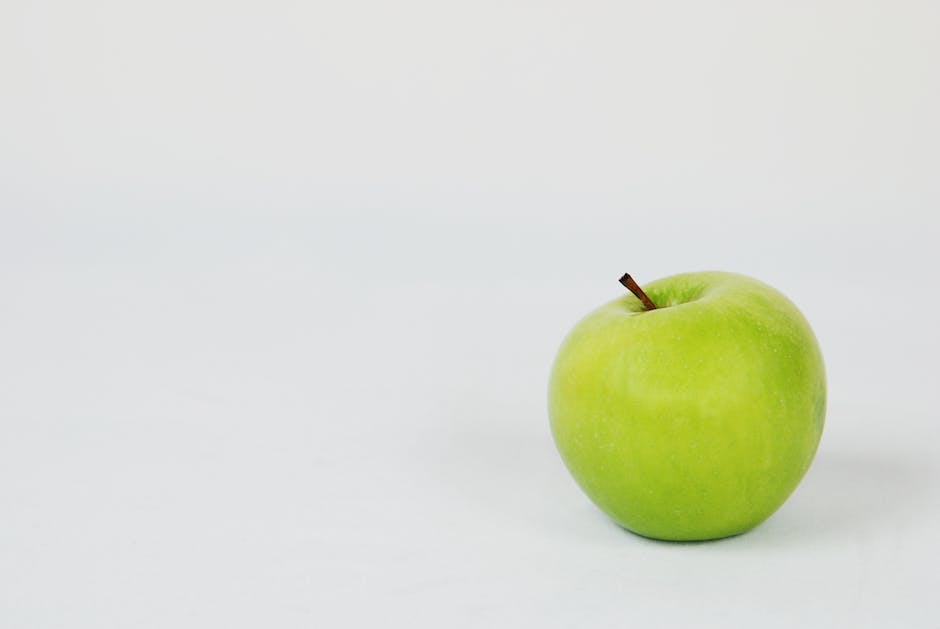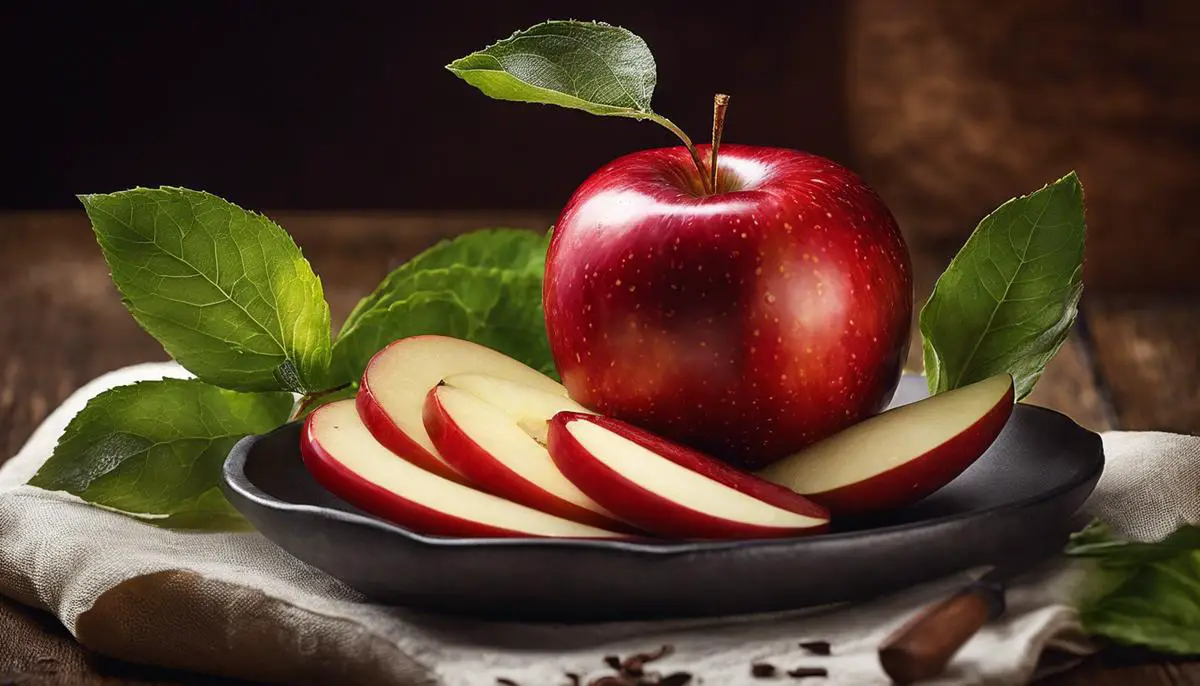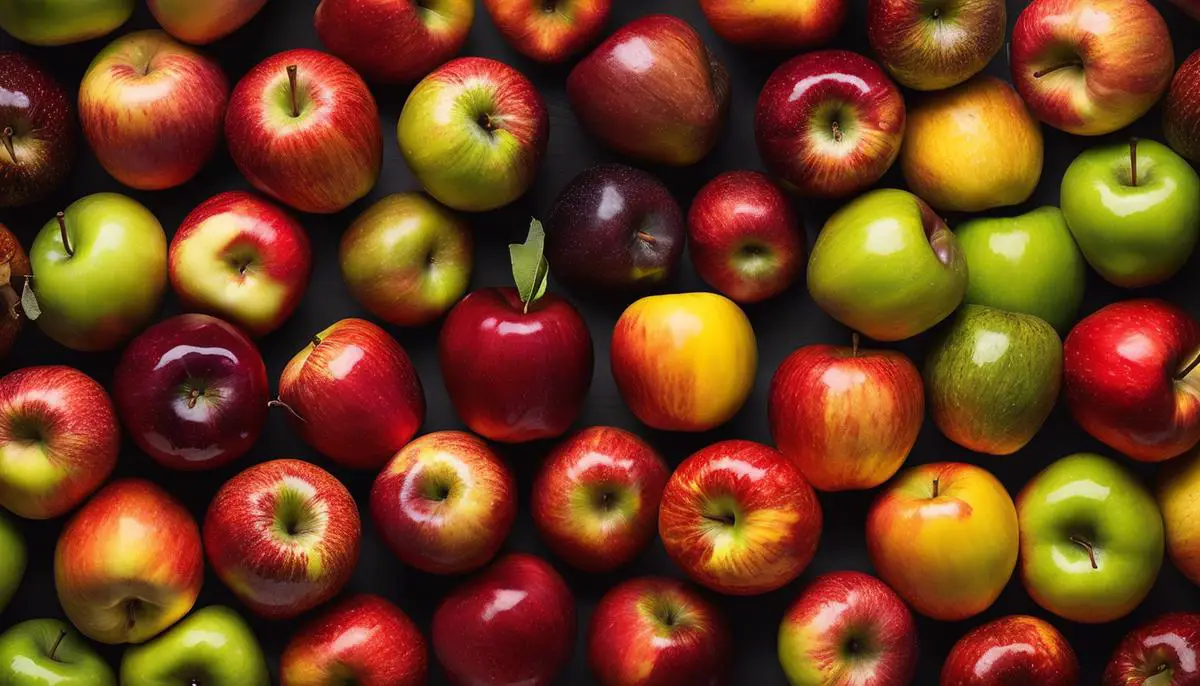The humble apple, a staple in fruit bowls around the world, offers more than meets the eye when it comes to its classification and uses. It has a rich heritage rooted in scientific taxonomy—one that charts its journey from the plant Kingdom down to its species. In the culinary world, Apple is a versatile element, managing to find its way into countless recipes and preparations. How it aligns with typical definitions of a fruit or vegetable stems from an interesting deliberation between botanical and culinary perspectives. The cultural lens adds another layer of complexity to the humble apple’s identity. Across cultures, perceptions and interpretations of this common fruit vary widely, leading to an entirely different categorization of it as a food item.
Scientific Classification of Apple
The apple is an intriguing fruit when viewed through the lens of its scientific classification. Unravelling the complexities of this seemingly simple fruit provides a fascinating window into the world of botanical taxonomy and the definition of fruit versus vegetable.
Belonging to the plant kingdom, part of the Angiosperms phylum and further categorized in the Rosaceae family, the apple tree is scientifically known as Malus domestica. Within this family, it falls under the Rosales order, more specifically, the Malus genus within the Rosaceae family. This scientific identification is not conjured from thin air concerning whims or fleeting preferences; indeed, it is grounded in the vast expanse of established botanical knowledge.
The classification relies on distinct characteristics. These include the apple tree’s fruit-bearing habit, the flower structure, and the arrangement of seeds within the apple— a testament to the symbiotic relationship between the scientific horticultural classifications and the natural world’s diverse manifestations.
In gauging whether the apple is a fruit or vegetable, the answer lies within its very definition. Fruit, by botanical standards, is the mature ovary of a flowering plant, typically containing seeds. It’s here that apples cement their fruity status: growing from the fertilized ovary after flowering and enclosing seeds within their core. As such, apples align perfectly with the botanical definition of a fruit.
Japan’s Kodama Lab’s exciting research corroborates the complex dialogue between development and mutation in apple varieties, unearthing the intricate pathways leading to our diverse assortment of apple varieties from the humble wild apple ancestors.
Contrasting this, vegetables are generally classified as plants’ edible parts, such as roots, stems, and leaves. It’s a broader spectrum, encompassing a variety of plant forms. However, it’s crucial to note that the terms ‘fruit’ and ‘vegetable’ can throw a different shade in the culinary world, where taste, usage, and custom play a decisive role, oftentimes in contrast with the botanical definitions.
Burrowing into the depths of scientific classification and understanding the apple’s role as a fruit enhances our grasp of botanical nuances, morphological intricacies, and brings into sharper focus the manifold wonders of nature – a treasure trove of knowledge waiting to be uncovered, bite by juicy bite into the humble apple.

Apple in Culinary Context
As elucidated already, the scientific categorization of apples rests comfortably within the realm of fruits thanks to their origin from the fertilized ovary of apple trees. Yet, the role of this popular produce item in gastronomy raises questions over this categorization. This brings us to an engaging and nuanced discourse about the culinary classification of apples and how their usage in the kitchen may influence their designation as a fruit or vegetable.
Cooking and food science has its distinct perspective on the fruit and vegetable dichotomy, which often differs from botanical classifications. In the culinary world, the crucial criteria becomes taste and usage, rather than plant morphology or reproductive mechanisms. Consequently, some fruits, for instance tomatoes or avocados, receive the label of vegetables on account of their flavor profiles and usage.
Through such a lens, the apple showcases a versatile culinary disposition. The apple’s sweet-crunchy presence enlivens a plethora of dessert dishes, reaffirming its identity as a fruit. Apple pie, tarte tatin, and apple crumble underscore this aspect.
However, the apple demonstrates its culinary adaptability by permeating the confines of savory cooking as well. Apple-based sauces augment pork dishes, coleslaws employ shredded apple for a refreshing tang, and roasted autumn vegetables warmly welcome apple chunks.
This duality of taste, the ability to straddle sweet and savory worlds, raises inquiries over whether apples are strictly fruit in the culinary sense. Admittedly though, countless fruits demonstrate savory applications. Still, it is the emphasis on the duality in the context of some culinary traditions, where the apple’s sweet character is downplayed to magnify its acidity and freshness, that potentially throws the apple into the culinary ‘vegetable’ basket.
Yet, these blurred lines do not upset the actual designation of the apple, since the culinary vegetable-fruit distinction remains a tool for cooks rather than a scientific reclassification. Thus, the apple journey from the orchard to the kitchen does not involve a biological makeover, but an organoleptic one.
Notably, the debate of an apple’s culinary transition also highlights a crucial thumb-rule of food science: the classification and usage of ingredients are often a negotiation between nature’s offerings and humanity’s appetite for variety. The apple’s culinary uses, therefore, stride beyond being mere recipes — any such exploration unravels a universal narrative of human creativity and ingenuity marrying science’s well-ordered world.
Consequentially, any quarrels over the apple’s culinary categorization also turn into a refreshing reminder of how cuisine extensively draws upon, interprets, and sometimes challenges, scientific classifications, and how this apple of discord, instead of depreciating the fruit, only enriches its multi-faceted identity.

Cultural Aspects and Perception of Apple
Fruit or vegetable — seemingly straightforward categories that become a labyrinth once we venture into the sphere of cultural perceptions and traditions. The apple is a perfect example of this. Despite established scientific classifications, cultural variants often deem the apple’s placement.
Various cultures project their perspectives onto how fruits and vegetables are defined. While western societies tend to classify foods based on sweetness, preparing methods, and meal usage, eastern societies might categorize them according to temperature effects on the human body. For instance, while scientifically an apple is a fruit, in some Eastern societies like China, it falls within the realm of “cold” foods due to its assumed effects on the human body.
Moreover, traditions and local practices have a profound effect on the classification of apples. In the Savoie region of France, apples are a traditional ingredient in ‘Tartiflette’, a savory dish, hence blurring the line between fruit and vegetable in the culinary world. Similarly, their usage in various Indian curries or stuffing in Moroccan cuisine further complicates this classification.
Delving further, traditional forms of medicine like Ayurveda classify green apples as vegetables due to their astringent and slightly bitter taste, distancing them from the sweet flavor profile popularly associated with fruits. On the other hand, the ancient art of food pairing may highlight apples’ compatibility with both sweet and savory flavors, proving their culinary duality.
Historically, apples have also been subjected to a multitude of beliefs and symbolic representations, adding yet another layer to their identity. In Greek mythology, apples were sacred to Aphrodite, the goddess of love, symbolizing beauty and fertility — an attribute usually associated with the realm of fruits.
Furthermore, in an anthropological sense, human negotiation between food and culture is profound, with the apple becoming an embodiment of this negotiation. As apple varieties teleport from their orchard to our kitchens, they undergo an organoleptic transformation. From pies to pork roast accompaniments, they fit into diverse culinary profiles, thereby enriching their multifaceted identity.
In a nutshell, while science brings clarity with its classifications, cultural perceptions and traditions provide nuanced perspectives, making the classification of apples as a fruit or vegetable a vibrant debate. Here, true understanding lies not in favoring one classification over another, but in examining how different perspectives illuminate the complex and rich identity of the apple.

Through exploring the scientific taxonomy of the apple, its culinary uses, and its varying cultural interpretations, we have gained a greater understanding of why it is considered a fruit. Its biological framework and how it is grown and harvested play an integral role, showing us that an item as common as the apple carries a rich heritage and complexity. Furthermore, its versatility within the culinary world and varying perceptions across cultures lend to the apple’s fascinating story. Enlightening ourselves about such common place things as an apple, surely deepens our culture knowledge, scientific understanding and enhances our appreciation of the world around us.
